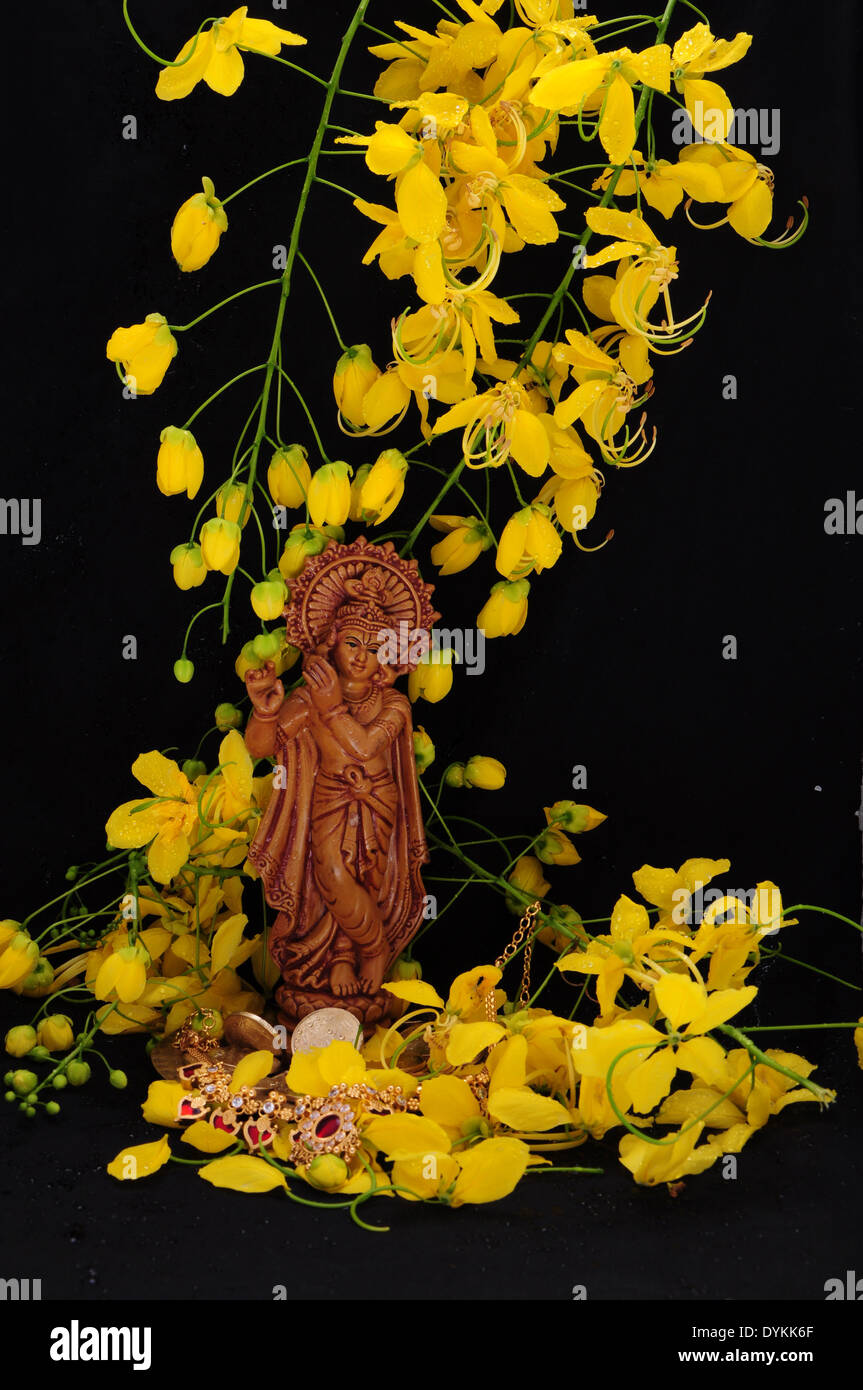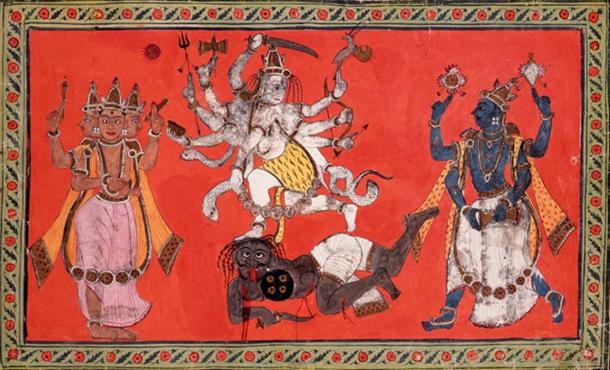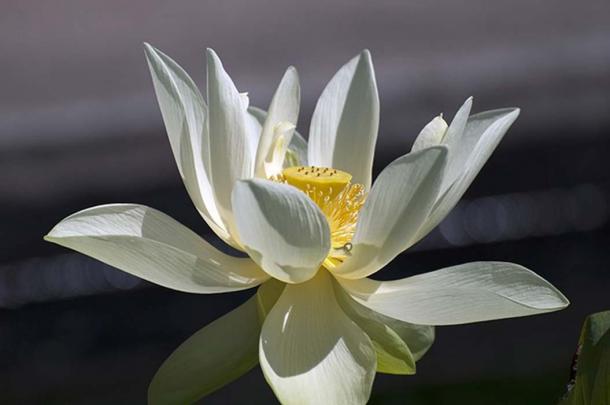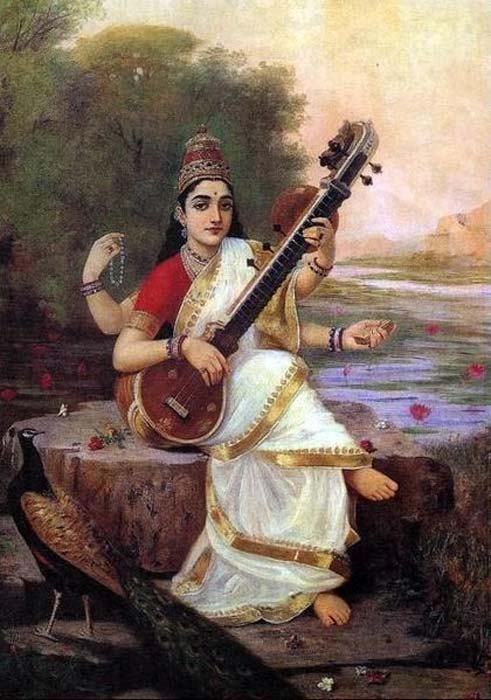To Day is(30th April, 2017)...1229th Birth Anniversary of..Jagadguru Sri.ADISANKARACHARYA.....
Some of his Divine work during his short span of 32 years on this Mother planet EARTH.
1.Jagadguru Sri Adi Sankara's Hymn to the Divine Mother.......
O Mother! Let all my speech be your prayer......let all my crafts and technology be your worship and be the mystic gestures of my hand, adorning you.......May all my movements become your devotional circumbulating........May everything I eat or drink be oblations to you..........Let my lying down in rest and sleep be prostrations to you. Mother........Whatever I do, may all that become a sacramental service and worship for you.
AND....................
2.Vivekachudamani Teachings on the fall of a Man of Wisdom.......
No great danger is there for the man of wisdom than carelessness about his own real nature. From this comes delusion, thence egoism. This is followed by bondage and then by misery. (Verse 322)
Finding even a wise man hankering after sense objects, forgetfulness torments him through the evil propensities of the intellect, as a woman torments her doting paramour. (Verse 323)
If the mind ever so slightly strays from the ideal and becomes outgoing, then it goes down and down, just as a ball, inadvertently dropped on a flight of stairs, bounces down from one step to another.(Verse 325).
3.Jagad Guru Sri Adi Sankaracharya.........
The greatest teacher of the Vedanta philosophy was Jagad Guru Adi Sankaracharya (AD788-820). By solid reasoning he extracted from the Vedas the truths of Vedanta, and on them built up the wonderful system of knowledge & wisdom that is taught in his commentaries.
He unified all the conflicting descriptions of Brahman and showed that there is only one infinite Reality. He showed that as man can only travel slowly on the upward road, all the varied presentations are needed to suit his varying capacity.
4.Adi Shankaracharya taught that Three things were the great gifts of God :
1 Human body.......2.... Thirst after God...3....Thirst after God.
A Teacher(Master/Guru) who can show up the light. When these three great gifts are ours, we may know that our redemption is at hand. Only knowledge can free and save us but with knowledge must grow virtue.Books cannot teach God, but they can destroy ignorance; their action is negative. To hold to the books and at the same time open the way to freedom is Adi Shankara’s great achievement.
His whole life’s work is nothing but that, the throbbing of the beauty of the Vedas and the Upanishads- All in a matter of just within 32 years & was undoubtedly an incarnation of Supreme.
5.Teachings of Adi Sankaracharya..............
What did the World’s acclaimed and renowned Teacher Sri.Adi Sankaracharya said about “Work”
The secret of action is to get the dexterity by which works naturally causing bondage cease to have that effect. That dexterity consists in being even minded in pain and pleasure and such opposites.
It is not proper for one who has not known the self to give up the duties enjoined on him. It will be wrong if such a person were to think that he should not do his duty on the plea that work leads to bondage. For the reason that action sets the wheel of the world in motion, the person on whom a duty is enjoined should perform it. Before attaining the competence to the knowledge of the self, a man should engage in the path of action (karma yoga), which is his proper sphere, as that will lead him to attain to self-knowledge.
Path of action is the means of reaching the true knowledge of self and consists in the performance of unselfish work accompanied by the conquest of the dualities of the sensations as such heat and cold and pleasure and pain, and done in the spirit of worship of God. It is the Yoga of concentration and equality while doing work. Ordinarily, work brings about bondage in the form of merit and demerit , virtue and vice. By God's grace work ceases to bind when it is done as worship of God. Karma Yoga, therefore, is the means to liberation.......&.......Until a man has attained the competence to follow the yoga of knowledge he should engage himself in work, as he is till then qualified only to follow the path of action.
While we all read about Jagadguru Sri. Adi Sankaracharya it will be most apt to know about in brief his LIFE HISTORY.........& to begin with........
Brief: -
JAGADGURU SRI ADI SANKARA.......
Born in Kalady in Kerala (now known as God’s own country) 788 CE in an orthodox Brahmin family to Sri Shiva guru (father) and Aryamba (mother). Parents under went penance at Vadakkumnathan Temple in Trichur, Kerala and as a result the Lord Vadakkumnathan appeared before the couple and blessed the couple for a divine child who would but be short lived- and in gratitude to the God, the child was named as Sankara (One of the many names to Lord Parameswara) The prefix Adi means Prime, Original & First was conferred on him after mastering all four Vedas at the tender age of 8 and later known and called as Jagadguru (World Teacher). Jagadguru Adi sankara lived only just 32 years, 6 months and 10 days. During this brief span he did the useful and purposeful work of several long lives. His powerful mind, sharp intellect, rich personality, ceaseless activity, stupendous achievements were so much so, that he left an indelible impression on the hearts, minds and thoughts of not only his contemporaries but also of succeeding generations with evidence. He has to his credit numerous divine and religious writings of extremely valuable in nature in the form of verses and poems, which are being used today by the people and will continue to be used by people forever.
As a matter of fact, his name, fame, profounding thoughts and amazing organizing power influenced the lives and work of many and will continue for many new generations to come, and these will remain immortal even beyond the existence of universe (if at all happens) As already mentioned earlier, Adi sankara was a son of a humble and pious Brahmin and did not posses any worldly wealth or power worth to mention. He was a monarch of mind, thought and spirit of man and too subtle for mortal eyes. He was imbued with the divine compassion, which exerts in the direction of providing enlightenment to the humanity and blossomed as a moral leader, a mentor of mankind and the spiritual ruler of the world. He exemplified the success of spiritual power. Though transient, remained a world teacher all times. He remained excellent in leadership, spirituality, management ideas and inspirational thoughts apart from being an ocean of compassion and magnanimous teacher.
He has also established four Madhas (Institutes of religious order) at: -
Sringeri (Karnataka) South
Jyothirmath (Uttranchal) North.......For continuing his work to complete his mission.
Attained Sarvajna pitha in Kashmir and shortly after that attained Mahasamadhi (pre-determined and unperturbed departure of soul from the body) at Kedarnath in 820 CE.
It is also said and known that Adi Sankara has attained Mahasamadhi at Vadakkumnathan Temple the place of his origin. With short and light life attained long and heavy ideologies and religious creations in the form of hymns, versus and literature to understand the values and realities of human life and living . An erasable accredit to the whole universe and its living being.................................for ever......&......Now a brief on.......
THE GREATNESS AND IMPORTANCE OF SRINGERI MUTT
SYNOPSIS.......
The great and divine personality, established Dakshinamanya Sri Sringeri Saradha Peetam (also known as Sringeri Madam) had lived just 32 years. (AD-788 – 820) JAGADGURU SRI SANKARA BHAGAVATPADA known as Sri Adi Sankarachrya.
Established in living tradition at Sringeri in the state of Karnataka, over the centuries, the Peetam has been adorned and illumined in an unbroken and undisputed master disciple traditional way by 36 Acharyas and the present Acharya being His Holiness Sri Bharathi Theertha Mahaswamigal. The first Acharya to adorn the position was Sri.Suresvarachrya during AD820-834 after Sri Adi Sankar Bagvadpada.The subsequent Peeta Acharyas who had adorned and governed the Sringeri Madha in a religiously traditional and divine way are as mentioned below: -
3. Sri Nityabodaghana Maha Swamigal AD 834- 848
4. Sri Jnanaghana Maha Swamigal AD 848- 910
5. Sri Jnanottama Maha Swamigal AD 910- 954
6. Sri.Jnanagiri Maha Swamigal AD 954-1038
7. Sri.Simhagiri Maha Swamigal AD1038-1098
8. Sri. Iswara Thirtha Maha Swamigal AD 1098-1146
9. Sri. Narasimha Thirtha Maha Swamigal AD 1146-1229
10.Sri.Vidya Sankara Thirtha Maaha Swamigal AD 1229-1333
11.Sri Barathikrishna Thirtha Maha Swamigal AD 1333-1380
12.Sri.Vidyaranya Maha Swamigal AD 1380-1386
13.Sri.Chandrasekhara Bharathi Maha Swamigal I AD 1386-1389
14.Sri.Narasimha Bharathi Maha Swamigal I AD 1389-1408
15.Sri.Purushottama Bharathi Maha swamigal I AD 1408 – 1448
16.Sri.Sankara Bharathi Maha Swamigal AD 1448-1455
17.Sri.Chandrasekhara Bharathi Maha Swamigal II AD 1455-1464
18.Sri.Narasimha Bharathi Maha Swamigal II AD 1464-1479
19.Sri.Purushottama Bharathi Maha Swamigal II AD 1479-1517
20.Sri.Raamachandra Bharathi Maha Swamigal AD 1517-1560
21.Sri.Narasimha Bharathi Maha Swamigal III AD 1560-1573
22.Sri.Narasimha Bharathi Maha Swamigal IV AD 1573-1576
23.Sri.Narasimha Bharathi Maha Swamigal V AD 1576- 1600
24.Sri.Abhinava Narasimha Bharathi Maha Swamigal AD 1600- 1623
25.Sri.Sachchidanda Bharathi Maha Swamigal I AD 1623- 1663
26.Sri.Narasimha Bharathi Maha Swamigal VI AD 1663-1706
27.Sri.Sacchidanda Bhjarathi Maha Swamigal II AD 1706- 1741
28.Sri, Abinava Sacchidanada Bharathi Maha Swamigal I AD 1741- 1767
29.Sri.Narasimha Bharathi Maha swamigal VII AD 1767- 1770
30.Sri.Sacchidanda Bharathi Maha Swamigal III AD 1770- 1814
31.Sri.Abhinava sachidanda Bharathi Maaha Swamigal II AD 1814- 1817
32.Sri.Narasimha Bharathi Maha Swamiagal VIII AD 1817- 1879
33.Sri.Sacchidananda Sivabhinava Narasimha Bharathi
Maha swamigal AD 1879-1912
34. Sri.Chandrasekhara Bharathi Maha Swamigal III AD 1912- 1954
35.Sri.Abhinava Vidya Thirtha Maha Swamigal AD 1954- 1989
36. Sri Bharathi Tirtha Maha swamigal AD 1989- Continuing
It will be apt to mention that apart from Sri. Adi Sankara Bhagvadpada- the following Jagadgurus of Sarada Peetam have contributed literary works by the grace and divine blessings of Sri Bagvadpada, for the benefit of sublime human living and betterment of the Society.
1. Sri. Suresvaracharya Maha Swamigal
2. Sri.Jnannaghannaacharya Maaha Swamigal
3. Sri.Sri.Bharathi Tirtha Maha Swamigal
4. Sri. Vidyaraanaya Maha Swamigal
5.Sri.Sankara Bharathi Maha Swamigal
6.Sri.Abhinava Narasimha Bharathi Maha Swamigal
7. Sri.Saaccahidananda Bharathi Maha Swamigal
8.Sri.Narasimha Bharathi Maha Swaamigal
9.Sri.Sivabhinava Narasimha Bharathi Maha Swamigal
10.Sri.Chandrasekhra Bharathi Maha Swamigal
And............WELCOME TO SRINGERI...........
Srigeri is the Abode of Gods, Acharyas, grace and peace. Do you need any more justification for not visiting Sringeri?
Do visit Sringeri, to restore the peace within you, and when you find the world around you too much for you to bear and certain incidents of life torments you.
AND DO NOT EVER FORGET TO VISIT SRINGERI......
When everything is well with you, and the fortune smiles at you to make you rich and prosperous – You will realize that you belonged to Sringeri-you will feel at Home. You will feel being with God and the sacred vibrations of Sringeri will evolve and awake your torpid spiritual state and nature.
Sringeri the ultimate place to restore, the peace, to feel divine, to kneel for worship and to attain Happiness. Create opportunities and keep visiting Sringeri.
May God grace and Acharyas bless all visitors of serene Sringeri...............&.......Finally........
Sankaraya, Shankaraya, Sankaraya Mangalam
Sankari Manoharaya Saswataya Mangalam
Oh Lord Shiva, Lord Shiva, Lord Shiva,
Oh Lord who is pretty to Parvathi,
Oh Lord who is forever constant
Yours in DIVINE FRIENDSHIP.............JK
J.KANNAN, M.Com, FIATA
"WE DON'T THINK TO BREATHE
WE BREATHE TO THINK"




